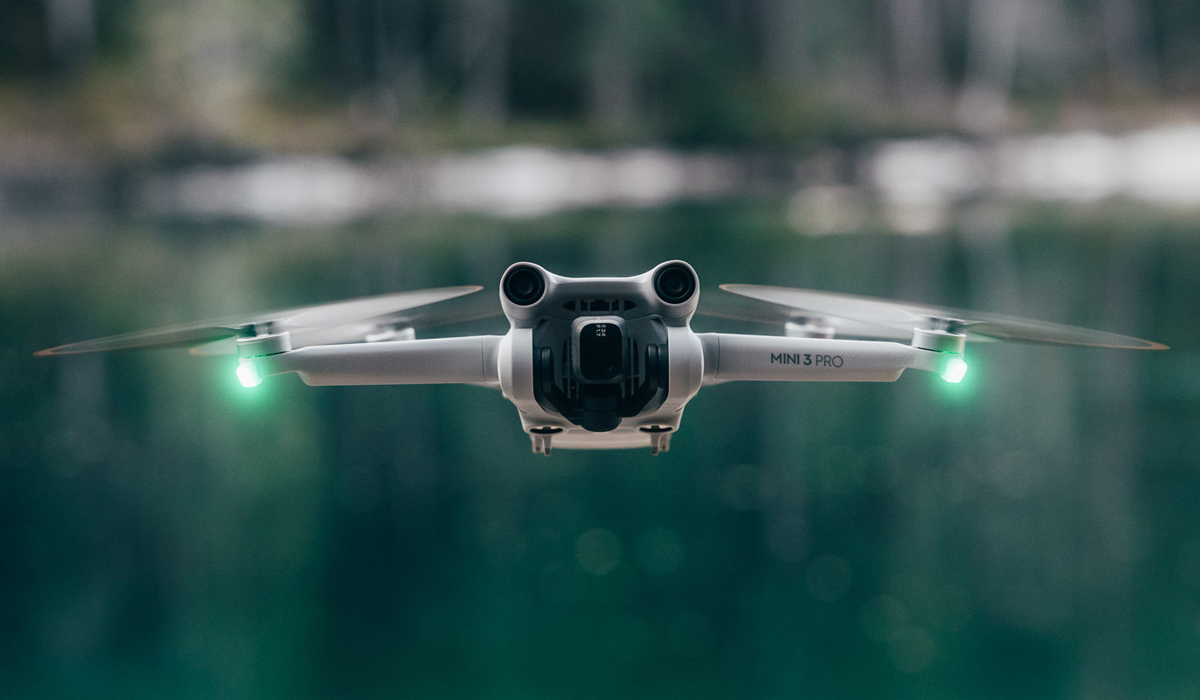
DJI Mini 3 Pro, the tech giant’s newest and most powerful sub-250-gram drone, is a huge leap forward in terms of hardware and performance. As pre-orders pour in from across the globe, a DJI product manager reflects on the company’s revolutionary Mini series and discusses how the team approached the task of exceedingly high expectations to design the Mini 3 Pro.
DJI product manager Lee, who prefers not to reveal his full name, has been working on the lightweight drone series since the OG Mavic Mini of 2018. This was a time when more and more countries were in the process of defining major drone laws and weight categories.
“Ultimately, many countries adopted a weight of 250 grams as the dividing line for drones that were considered more safe,” Lee recalled. “This line gave us a clear starting point: make a drone 249 grams or lighter.”
In addition to regulatory compliance, Lee’s team was tasked to fulfill two other goals: ensure that the drone boasts extreme portability and DJI-quality performance.
Four years and three Mini drones later, the goals remain the same but the bar has been raised.
Since a weight restriction marks a clear red line in a Mini product’s development, any new feature or component adjustment brings the risk of stepping over the line. As Lee put it, “We were walking an unknown path to begin with, and the only way forward was further in.”
Also read: Axon begins taser drone development amid backlash from ethics advisory board
Unique fix for DJI Mini 3 Pro’s obstacle sensing system
At DJI, product development is divided between several distinct teams. Each group focuses on a specific aspect of the drone, such as the propulsion system, camera system, and obstacle sensors. Whenever a team comes up with a new structure, they would have to see how it would affect another structure. As such, the production process becomes “a constant state of mutual checking and balancing to find the optimal solution.”
A perfect example of the balancing act between engineering and teamwork was seen while developing a completely redesigned obstacle sensing system for the Mini 3 Pro. The decision to place rear-facing sensors at the front of the drone ultimately came as a solution to a series of several challenges.
To reduce overall load, the team looked for ways to replace an internal cooling fan, which came in the form of the rear propellers and arms redesigned to feed air into a set of holes in the back. But this novel cooling solution created a trade-off: the new propeller and arm structure would prevent the rear-facing sensors from seeing with an unobstructed view. If the propellers and rear arms were raised, it would let the rear sensors see clearly, but this would bring the propellers away from the holes, decreasing their cooling ability, which would also shorten battery life. One problem soon became a stack of them.
After several rounds of discussion and redesign, a completely different idea emerged: why not place the rear-facing sensors toward the front of the aircraft? It had never been done before, but the team found that it worked perfectly.
“We suddenly found that all the problems were solved after we placed the sensors upfront,” Lee quipped. “Sometimes, we are trapped in our own obsessions or existing perceptions when it comes to design. But a new understanding and new ideas may be the key to breaking through these kinds of bottlenecks.”
Related: DJI Mini 3 Pro drone: Top 10 things to know
Designing for customers who know what they want
While Lee and his colleagues like to make travel videos with their drones, after developing two Mini drones, they came to realize that other users don’t do the same. Parents would fly for weekend fun with their children; retirees would use a Mini to complement their personal photography; young users would film and publish their content for their social media feed; and so on.
“In the past, finding the product’s overall direction wasn’t that difficult. Product managers are themselves users, so if a new drone satisfied their needs, it was usually aligned with what the drone community also wanted. But as the community grew, we found that there was a gap between our perception of how people use a drone and how they actually use one,” Lee explained.
Thankfully, the generations of Mini drones before the first “Pro” version allowed the team to get the feedback they needed. Customer surveys, constant engagements with retailers, and after-sales interaction all allowed Lee and his team to see “whether the original intention of the design and the actual user behavior are consistent.”
In the end, the hardworking engineers came up with a drone that was guaranteed to exceed high expectations. As Lee summed up, “Just because a Mini drone is portable and compliant, that doesn’t make it entry-level. DJI Mini 3 Pro represents the most power and versatility that we can currently fit into a drone that weighs less than 250 grams.”
Read more: How to stream DJI drone video to another device using Litchi
FTC: We use income earning auto affiliate links. More.






Comments